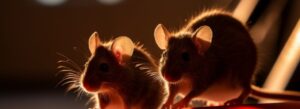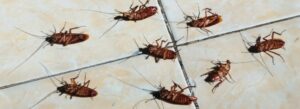Local Insight from Innovation Pest Control, Kent’s Wasp Removal Specialists
Summary
In the UK, wasps start to emerge in March as temperatures rise. However, peak activity — where homeowners see swarms, nests, and increased aggression — typically occurs between June and August. Understanding the month-by-month behaviour of wasps helps you avoid infestations and act early.
At Innovation Pest Control, we’ve spent over a decade removing nests, advising residents, and helping protect families and businesses across Kent. This article explains:
- The UK wasp lifecycle by month
- Signs to look for in each season
- When nests form and expand
- When queens emerge and when they die
- Why timing matters for prevention and removal
- How Kent’s climate affects wasp behaviour
- And how to get rid of wasps safely and fast
Why Timing Matters
Knowing when wasps come out helps you:
- Stop infestations before they grow
- Time inspections and treatments effectively
- Prevent nests near children, pets, and entrances
- Understand seasonal behaviour and avoid panic
Let’s take a look, month by month.
UK Wasp Activity Calendar
| Month | Wasp Behaviour |
|---|---|
| Jan–Feb | Queen wasps in hibernation |
| March | Queens start to wake if mild |
| April | Nest scouting, early egg laying |
| May | First larva hatch, nest building begins |
| June | Rapid colony growth, first workers emerge |
| July–Aug | Peak wasp activity, nest aggression increases |
| Sept | Nest declines, males and new queens produced |
| Oct | Queens leave to find hibernation sites |
| Nov–Dec | Nests die off, queens go dormant |
Understanding the Wasp Lifecycle
UK social wasps (especially Vespula vulgaris and Vespula germanica) follow a yearly cycle. It begins and ends with a single queen.
- Spring – Queen emerges, finds nesting site, lays eggs
- Early Summer – Eggs hatch into larvae, then workers
- Late Summer – Workers forage, defend nest, and support queen
- Autumn – New queens and males born
- Winter – Nest dies, fertilised queens hibernate
This eusociality allows the entire colony to function as one unit — much like bees and ants. Wasps are highly adaptive hymenoptera, and their behaviour shifts based on temperature, food availability, and environment.
JANUARY–FEBRUARY: Hibernation and Survival
Wasps don’t die in winter — only the queen survives.
After mating in autumn, fertilised queens look for sheltered hibernation sites, such as:
- Loft insulation
- Garden sheds
- Tree bark or fence panels
- Compost bins
- Garages or outbuildings
Here in Kent, we often find hibernating queens tucked behind log stores, in the corner of sheds, or nestled in forgotten toolboxes.
They survive off fat reserves and enter a dormant state. If disturbed or exposed to fluctuating heat, they may emerge early — only to die of starvation or cold.
MARCH: Waking Up Early
As the weather warms, queens begin to wake from hibernation. The trigger is usually a consistent temperature above 10°C.
In March:
- Queens leave shelter and begin feeding on nectar and early flowers
- They scout potential nest sites: lofts, eaves, compost bins, wall cavities
- They may die if food is scarce or weather drops
Kent tip: Crocus, daffodils, and primroses can act as pollinator magnets — including wasps. You may see queens around flowering borders as early as mid-March.
APRIL: Nest Building Begins
In April, the queen:
- Begins constructing the first paper nest chambers using chewed wood
- Lays her first set of eggs
- Continues to forage for protein (spiders, aphids, small flies)
These first eggs will hatch into larvae, which she feeds herself until the first adult workers emerge.
Most wasp nests we’re called to remove later in the year all start with this tiny structure in April.
MAY: Larvae Hatch, Workers Take Over
May is a transition point:
- The queen remains in the nest to lay eggs
- Hatched workers take over foraging and nest expansion
- Nest size increases rapidly
Workers forage for:
- Sugars (plant nectar, honeydew, fallen fruit, fizzy drinks)
- Insects (beetles, caterpillars, moths, flies)
- Wood fibres for nest building
You may start to see workers near bins or windows. We recommend inspections this month — before colonies grow large.
JUNE: The Real Activity Begins
In June:
- Colonies expand dramatically — hundreds of workers may be active
- Nests can grow to the size of a melon
- Aggression increases — workers defend their territory
Innovation Pest Control gets its first major influx of wasp nest calls this month. We’ve removed nests from:
- Loft spaces in Canterbury
- Under patios in Maidstone
- Behind garden furniture in Ashford
- Inside wall cavities in Medway
This is the month where “wasp removal near me” searches start spiking — and for good reason.
JULY–AUGUST: Peak Aggression and Nest Size
These are the worst months for wasp-related incidents:
- Colonies can reach 5,000+ wasps
- Workers become more aggressive (defending nest, competing for sugar)
- Risk of stings increases, especially around bins, BBQs, and outdoor eating areas
You’ll see them hovering near:
- Fizzy drinks
- Ice lollies
- Barbecues
- Dog food
- Recycling bins
Asian hornets, yellowjackets, and European hornets are also more visible in Kent during these months.
If you suspect a nest, avoid disturbing it. Call us — we have all the gear, experience, and licensed insecticides needed to handle even the largest infestations.
SEPTEMBER: Decline and Change
In September:
- Queens stop laying fertilised eggs
- The colony begins to break down
- New males and queens are produced
- Workers have less purpose — and more time to sting
This month is when most stings occur. Workers become aimless and aggressive, often found in pubs, parks, schoolyards, and high-traffic areas.
We offer fast nest removals, especially important before school term restarts and during harvest season, when fallen fruit attracts wasps to orchards and gardens.
OCTOBER: Queens Leave, Nests Collapse
Come October:
- Newly fertilised queens leave the nest
- They search for hibernation sites
- Old nests die out and decay
If you’ve had a nest in a loft or shed, you’ll often find a paper-like husk. Don’t worry — these aren’t reused the following year.
But the area can attract future queens next spring.
NOVEMBER–DECEMBER: Dormancy Again
By this point, only new queens survive — all others have died. You won’t see active wasps unless we get an unseasonably warm day.
This is the perfect time for:
- Nest clearance
- Sealing entry points
- Preventative inspections
We offer winter discounts for wasp-proofing and inspections across Kent — especially popular with property managers and landlords.
Why Do Wasps Get More Aggressive in Late Summer?
Three reasons:
- Colony purpose declines – Workers no longer have larvae to feed, so they wander.
- Sugar cravings – They seek out sweet food and drinks.
- Queen dies or leaves – The structure collapses, and defence mechanisms go into overdrive.
Behavioural scientists like Seirian Sumner have linked this shift to hormonal and neurological changes — a survival mechanism gone wrong.
Wasp Timing and Kent’s Climate
Kent’s microclimates — especially near the coast and countryside — influence wasp behaviour:
- Coastal towns like Folkestone and Herne Bay tend to see earlier queen emergence due to milder conditions
- Rural areas around Tenterden, Cranbrook, and Edenbridge see more ground-nesting species
- Urban spots like Ashford, Maidstone, and Canterbury report higher numbers of loft or eaves nests
When to Call Innovation Pest Control
If you’re noticing:
- Wasps entering and exiting the same hole in a wall or roof
- Loud buzzing in a ceiling, shed, or cavity
- Nests near doors, paths, or children’s play areas
…it’s time to act.
We offer:
✅ Same-day removal ✅ Safe, licensed treatment ✅ Protective equipment ✅ Full disposal ✅ Prevention advice
We handle everything from Asian hornet reports to yellow jacket removal near me, hornet nest removal near me, and more.
FAQs
Q: What month do wasps start to die off? October. The nest collapses as food runs out and temperatures fall.
Q: What if I see wasps in January? It’s rare, but could be a hibernating queen disturbed by heating or loft insulation. Leave her alone or call us.
Q: Do wasps return to the same nest? No. Nests are never reused — but if the area is ideal, another queen may nest nearby next year.
Q: Can I remove a nest myself? We strongly advise against it. Especially in summer, nests can house thousands of aggressive defenders.
Need Help with Wasps?
Whether it’s spring prevention or summer stings, we’re Kent’s go-to team for all things wasp control.
📍 Based in Ashford 📞 Call us on 07743 958 655 🌐 Visit: innovationpestcontrol.co.uk/wasps
Final Word
Wasps follow the seasons — but so should your strategy.
The best time to act? March through May — before nests are established.
The worst time to wait? July and August — when you’re dealing with 5,000 angry wasps.
Don’t let a tiny queen become a giant problem. Whether you’re seeing early movement or facing full-blown infestation, Innovation Pest Control is ready.







